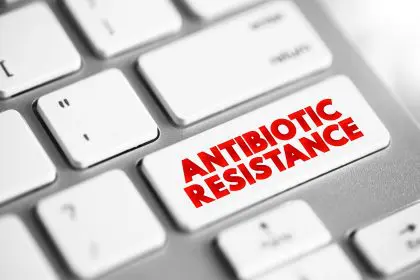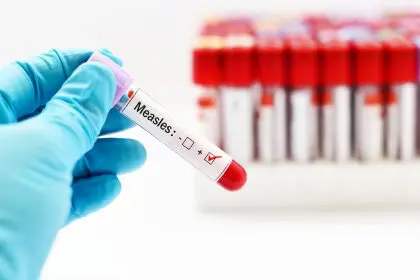The world’s changing climate is quietly orchestrating one of the most significant public health transformations in modern history, bringing dangerous tropical diseases to communities that have never faced such threats before. Rising temperatures, shifting rainfall patterns, and extreme weather events are creating perfect conditions for disease-carrying insects and ticks to expand their territories into previously safe regions, potentially turning your peaceful neighborhood into a battleground against deadly pathogens.
This climate-driven disease expansion represents far more than a theoretical future concern. Communities across temperate regions are already witnessing the arrival of mosquitoes, ticks, and other disease vectors that were historically confined to tropical and subtropical areas. These tiny invaders carry with them a devastating arsenal of viruses, bacteria, and parasites capable of causing severe illness, permanent disability, and death in unprepared populations.
The relationship between climate and disease transmission operates through complex mechanisms that affect every aspect of vector biology and behavior. Temperature increases accelerate insect development cycles, extend breeding seasons, and enhance pathogen replication within vector bodies. Meanwhile, changing precipitation patterns create new breeding sites while eliminating others, fundamentally altering the geographic distribution of disease-carrying species.
Understanding this climate-disease connection requires recognizing that vector-borne diseases don’t simply appear overnight in new locations. Instead, they establish themselves gradually through a process of range expansion, adaptation, and population growth that can take years to become apparent to local health authorities and residents.
The implications extend beyond individual health risks to encompass healthcare system preparedness, economic impacts, and community resilience. Areas with no historical experience of tropical diseases often lack the diagnostic capabilities, treatment protocols, and public health infrastructure necessary to respond effectively to vector-borne disease outbreaks.
The 8 tropical terrors marching toward your town
Dengue fever represents the most rapidly expanding vector-borne disease globally, with climate change enabling its mosquito carriers to establish populations in previously unsuitable regions. This viral infection causes severe flu-like symptoms that can progress to life-threatening hemorrhagic fever and shock syndrome. The Aedes aegypti mosquitoes that transmit dengue thrive in urban environments and can breed in small amounts of standing water, making suburban neighborhoods ideal expansion targets.
Chikungunya presents another mosquito-borne threat spreading into new territories as temperatures rise. This viral disease causes debilitating joint pain that can persist for months or years after initial infection, essentially crippling previously healthy individuals. The same Aedes mosquitoes that carry dengue also transmit chikungunya, creating the potential for co-circulation of both diseases in newly invaded areas.
Zika virus gained international attention for its connection to birth defects, but its climate-driven expansion poses ongoing threats to reproductive health in expanding regions. Beyond its devastating effects on developing fetuses, Zika can cause neurological complications in adults and has been linked to Guillain-Barre syndrome. The virus’s ability to spread through both mosquito bites and sexual transmission makes it particularly challenging to control.
West Nile virus exemplifies how climate change can enhance the transmission of diseases already present in many regions. Rising temperatures increase viral replication within mosquitoes while extending their active seasons, leading to more intense outbreaks and expanded geographic distribution. This neuroinvasive virus can cause meningitis, encephalitis, and permanent neurological damage in severe cases.
Lyme disease expansion represents the tick-borne component of climate-driven disease spread, with warming temperatures enabling tick populations to survive in previously inhospitable northern latitudes and higher elevations. This bacterial infection can cause chronic arthritis, neurological problems, and cardiac complications if left untreated, while its early symptoms often mimic other conditions, leading to diagnostic delays.
Malaria’s potential return to regions where it was previously eliminated poses one of the most serious climate-related health threats. Rising temperatures can enable malaria-carrying Anopheles mosquitoes to survive in areas where they previously couldn’t establish permanent populations, while changes in precipitation patterns create new breeding opportunities. The disease’s ability to cause severe anemia, organ failure, and death makes its potential spread particularly concerning.
Yellow fever represents a viral hemorrhagic fever that could expand beyond its traditional tropical range as climate conditions become more favorable for its Aedes mosquito vectors. This disease can cause severe liver damage, bleeding disorders, and death in up to 50 percent of severe cases, making its potential spread a significant public health concern.
Leishmaniasis encompasses a group of parasitic diseases transmitted by sandflies that are expanding their range as warming temperatures enable these vectors to survive in new areas. The disease can cause disfiguring skin lesions, organ damage, and death if left untreated, while diagnosis and treatment remain challenging even in areas with established healthcare infrastructure.
How climate chaos creates disease highways
Temperature increases serve as the primary driver of vector-borne disease expansion by directly affecting insect and tick survival, reproduction, and pathogen development. Most disease vectors are cold-blooded organisms whose metabolism and life cycles accelerate with rising temperatures. This acceleration reduces the time required for insects to mature and reproduce while simultaneously shortening the incubation period for pathogens within vector bodies.
The concept of thermal thresholds helps explain why small temperature increases can have dramatic effects on disease transmission. Many vectors require minimum temperatures to survive and reproduce, while pathogens need specific temperature ranges to develop within their vectors. Climate change is pushing these thermal boundaries northward and to higher elevations, opening previously protected areas to invasion.
Precipitation pattern changes create complex effects on vector populations by altering breeding site availability and survival conditions. Increased rainfall can create new breeding sites for mosquitoes while flooding existing habitats, potentially dispersing vector populations to new areas. Conversely, drought conditions can concentrate vectors and hosts around remaining water sources, intensifying transmission in localized areas.
Extreme weather events accelerate disease spread through multiple mechanisms including habitat disruption, population displacement, and infrastructure damage. Hurricanes, floods, and storms can transport vectors over long distances while creating ideal breeding conditions in their aftermath. These events also disrupt public health systems and disease surveillance capabilities when they’re needed most.
Seasonal pattern disruption extends vector activity periods and alters the timing of disease transmission cycles. Warmer winters allow more vectors to survive year-round rather than dying off seasonally, while extended warm seasons provide longer periods for disease transmission and population growth. These changes can overwhelm traditional seasonal disease control measures.
Ecosystem modifications create new ecological niches for disease vectors while eliminating natural population controls. Climate-induced changes in vegetation, water availability, and species composition can favor disease vectors over their natural predators and competitors, leading to population explosions in newly suitable habitats.
Recognizing the invasion in your backyard
Early warning signs of vector-borne disease establishment often appear years before human cases are detected by health authorities. Increased sightings of unfamiliar mosquito or tick species can indicate range expansion, particularly when these observations occur during seasons when such vectors were previously absent. Residents should pay attention to mosquitoes that are active during daylight hours, as many tropical disease vectors differ from native species in their biting patterns.
Pet and wildlife health can serve as sentinel indicators of emerging vector-borne diseases, as animals often serve as amplifying hosts for these pathogens. Unusual illness patterns in local wildlife, increased tick burdens on pets, or reports of exotic parasites in domestic animals may signal the establishment of new disease transmission cycles.
Environmental changes in local ecosystems can indicate conditions favorable for vector establishment. The appearance of new plant species, changes in bird migration patterns, or alterations in local water sources may create habitat conditions suitable for invasive disease vectors. Urban heat island effects can also create microclimates that enable tropical vectors to survive in otherwise unsuitable regions.
Healthcare system indicators include increasing reports of undiagnosed febrile illnesses, unusual neurological symptoms, or treatment-resistant infections that don’t fit typical regional disease patterns. Emergency departments and urgent care facilities often serve as early detection points for emerging vector-borne diseases, particularly when standard diagnostic tests fail to identify causative agents.
Fortifying your defenses against climate diseases
Personal protection strategies must evolve to address the expanded threat landscape created by climate change. Traditional approaches like using repellents during peak mosquito season may prove inadequate when dealing with day-biting tropical mosquitoes that remain active year-round. Comprehensive protection requires understanding the specific behaviors and preferences of newly arrived vectors.
Property management takes on new importance as climate change brings disease vectors to previously safe areas. Eliminating standing water sources becomes critical even in regions where this wasn’t previously necessary, while landscape modifications may be needed to reduce habitat suitability for invasive vectors. Air conditioning and window screens become essential protective barriers rather than mere comfort features.
Community surveillance and reporting systems need enhancement to detect emerging threats before they become established. Residents should understand how to identify and report unusual vector species or unexplained illness patterns to local health authorities. Community-based monitoring programs can serve as early warning systems for vector-borne disease establishment.
Healthcare preparedness involves ensuring local medical facilities have the diagnostic capabilities and treatment protocols necessary to manage tropical diseases. This includes establishing relationships with reference laboratories, developing clinical guidelines for unfamiliar diseases, and training healthcare workers to recognize symptoms of exotic vector-borne illnesses.
Travel considerations become more complex as disease distributions shift unpredictably due to climate change. Traditional travel medicine recommendations may not account for newly established disease transmission areas, requiring more comprehensive protection strategies and post-travel monitoring for symptoms of exotic diseases.
Public health infrastructure adaptation requires communities to develop response capabilities for diseases they’ve never previously encountered. This includes vector control programs, disease surveillance systems, and emergency response protocols adapted to address climate-driven disease emergence.
The intersection of climate change and infectious disease represents one of the most immediate and tangible ways that environmental changes affect human health. As temperatures continue rising and weather patterns become more extreme, the threat of vector-borne disease expansion will only intensify, making preparation and vigilance essential for protecting community health in an increasingly connected and rapidly changing world.

















